Authentic Pork Kimchi Stew Recipe (Kimchi Jjigae)
Create the classic Korean Kimchi Stew with this authentic Kimchi Jjigae recipe. Made with fatty pork and well-fermented cabbage kimchi, this popular dish brings restaurant-quality flavor to your home kitchen!
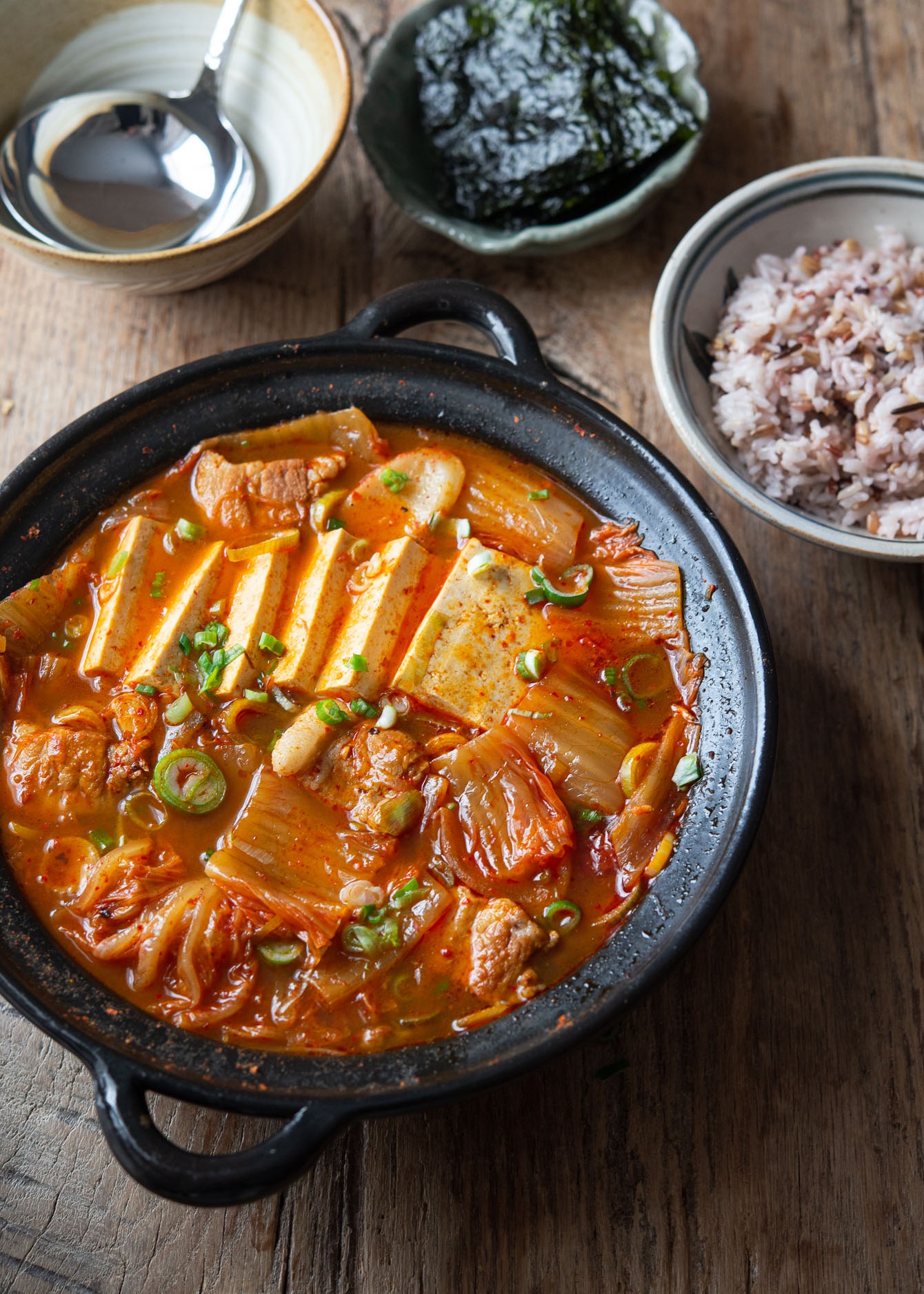
Craving a bowl of warm, hearty, and slightly tangy kimchi stew, also known as kimchi jjigae?
This authentic Korean recipe, made with fatty pork and well-fermented cabbage kimchi, is a staple in both Korean households and restaurants.
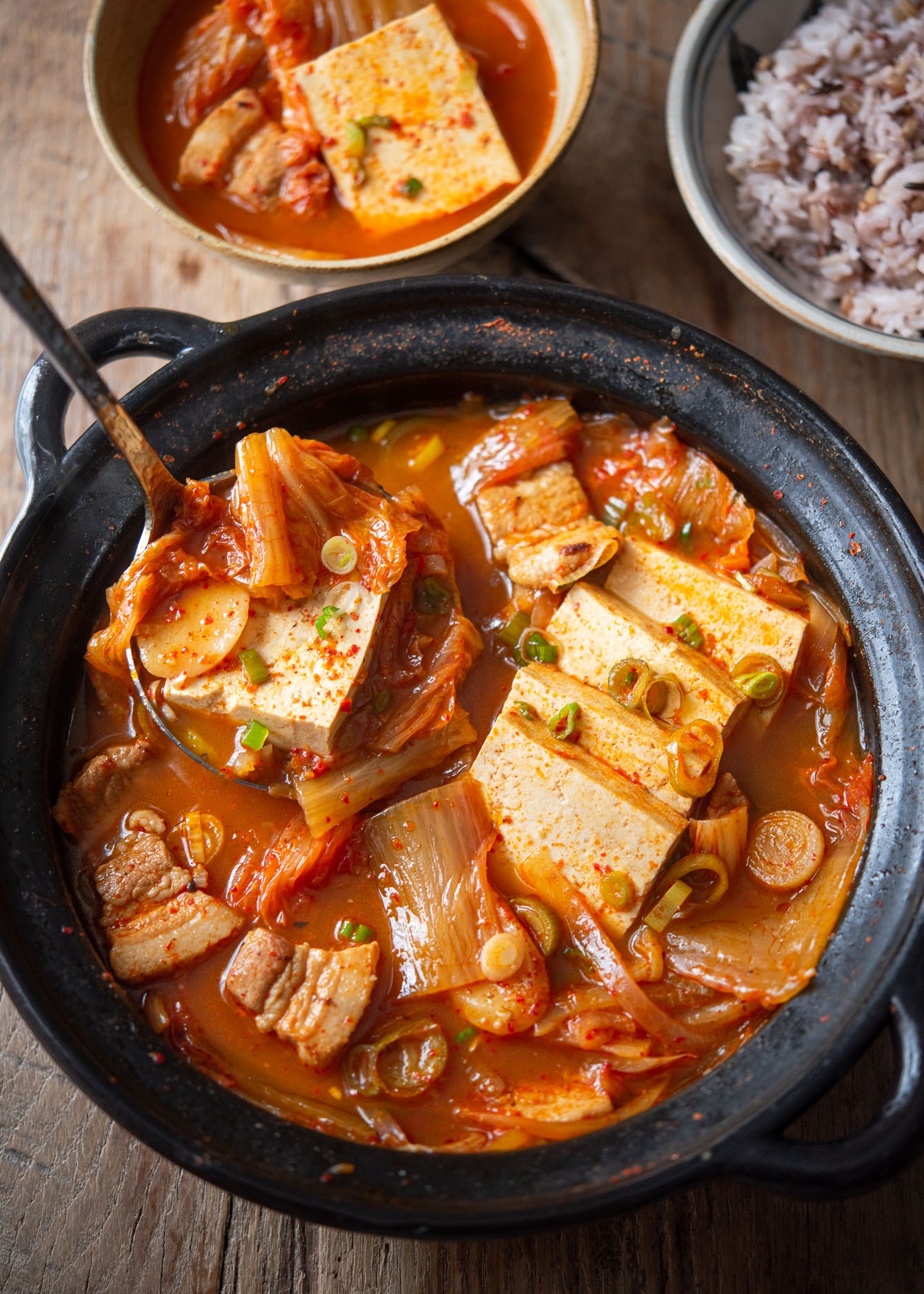
Classic Korean Stew Made with Kimchi and Pork
Kimchi jjigae, a staple in Korean Korean home-cooked meals, often stirs a sense of nostalgia among Koreans. Its hearty warmth and savory notes make it a classic comfort food that’s enjoyed regularly.
This kimchi stew recipe presents a simple yet delicious way to utilize your leftover fermented kimchi. It embraces the traditional preparation that favors fatty cuts of pork like pork belly or shoulder, although you’ll find different meat or seafood in regional variations.
The essence of kimchi stew lies in its core ingredients – the sour leftover kimchi, pork, and tofu. These elements are not only easy to source but also bring an incredibly rich flavor to the stew.
Varieties of Kimchi Jjigae
This authentic Korean stew can be prepared in numerous ways, with pork kimchi stew being the most common. Discover some of the popular variations in Korean home cooking:
- Pork kimchi stew (dueji kimchi jjigae): The standard version using fatty pieces of pork and tofu.
- Tuna kimchi stew (chamchi kimchi jjigae): People typically prepare this tuna version for camping trips because it is easy and portable – the ingredients don’t require refrigeration.
- Mackerel pike kimchi stew (kkongchi kimchi jjigae): Made with canned mackerel pike.
- Spam kimchi Stew: Using a can of spam makes another delicious stew in no time.
- Anchovy kimchi stew (myulchi kimchi jjigae): People in the southern part of South Korea traditionally make a classic version of this dish using dried anchovies and perilla oil.
- Fish cake kimchi stew (eomuk kimchi jjigae): Using Korean fish cakes and anchovy stock makes a uniquely mild and savory stew. My cookbook, Korean Cooking Favorites, shares a recipe, so check it out.
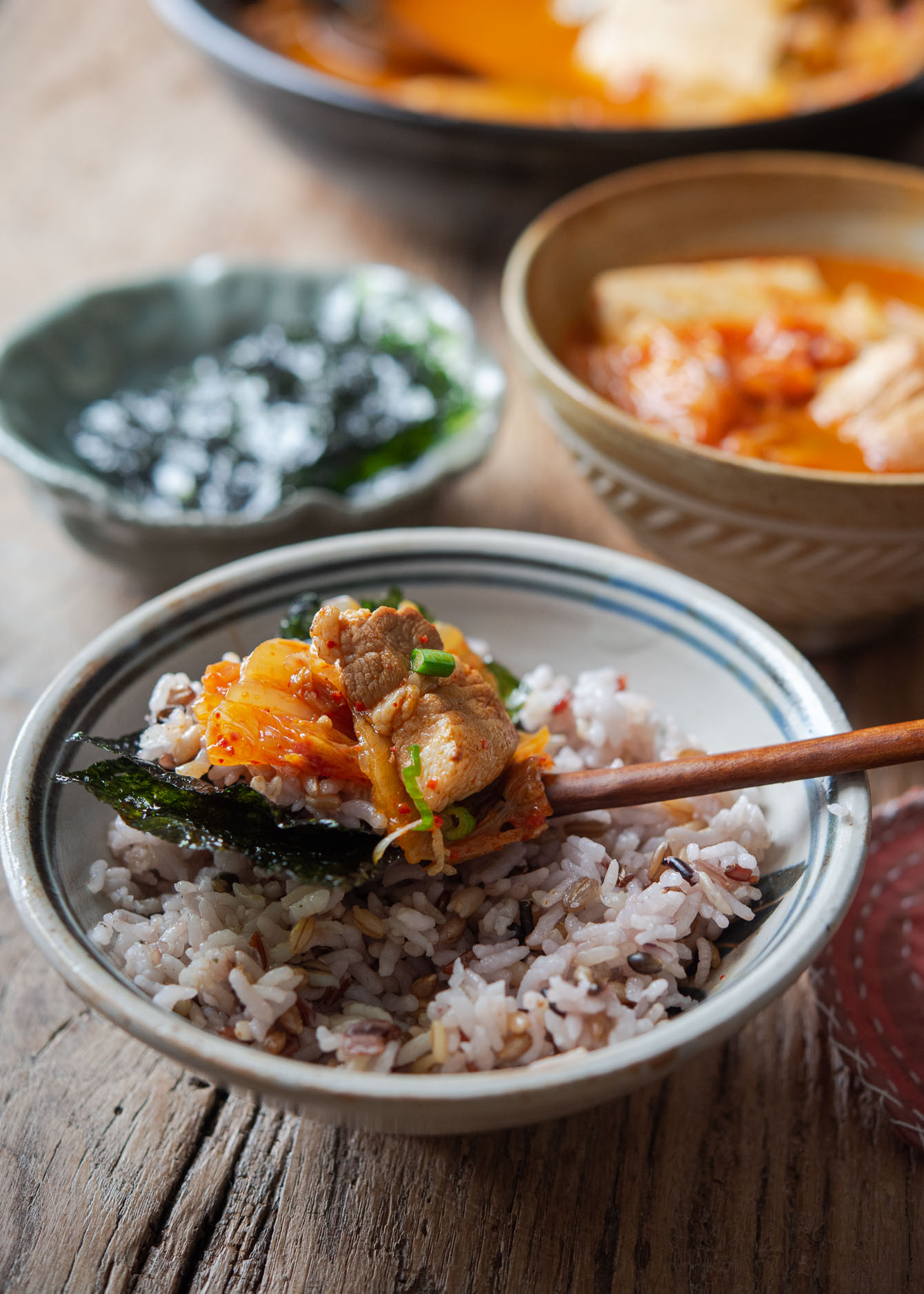
Tips to Create the Best Kimchi Jjigae
To maximize the flavor depth and umami of your Kimchi Stew, follow these tips:
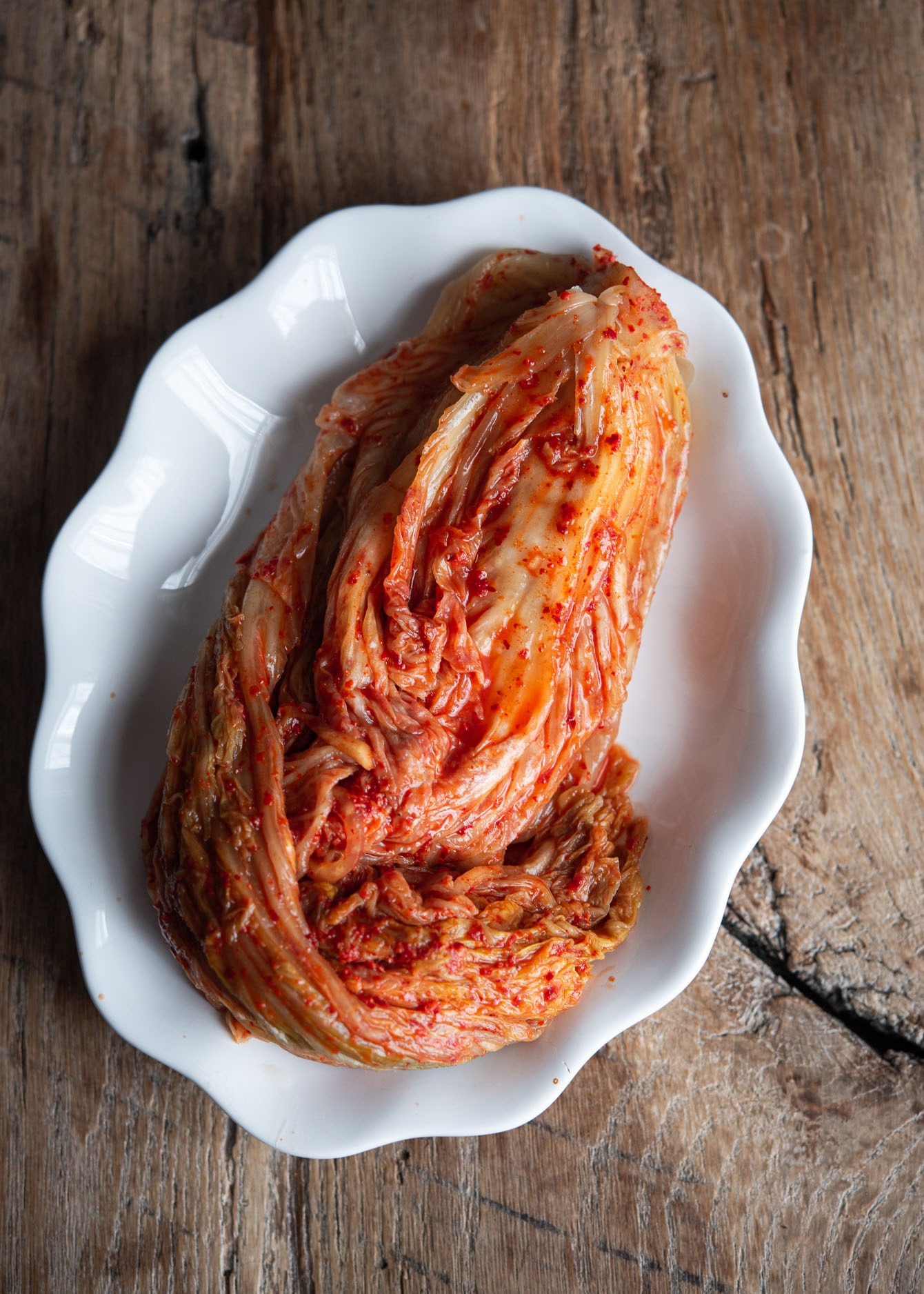
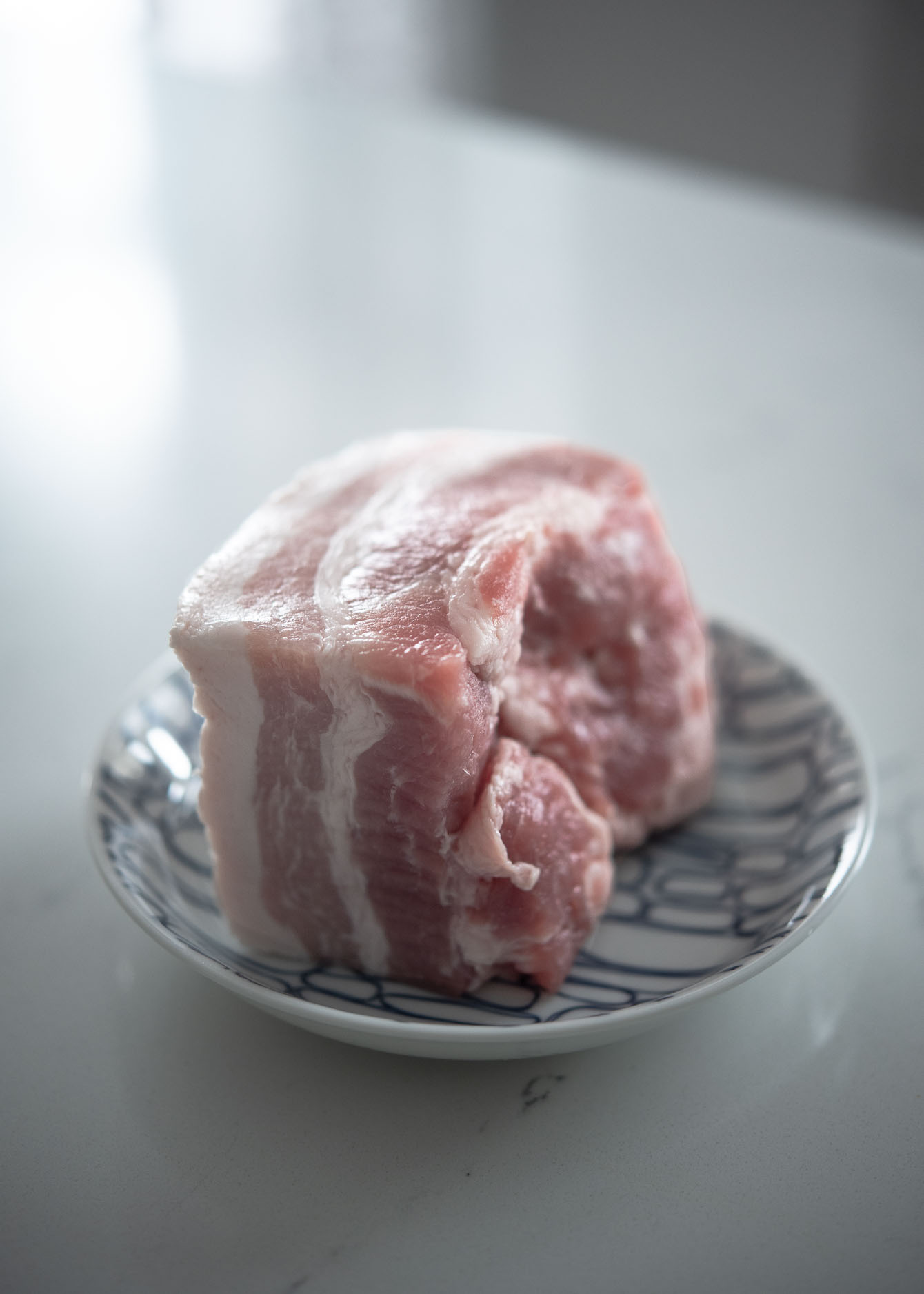
- Use very old, sour cabbage kimchi – a great way to use up extra kimchi that’s been taking up space in the fridge.
- The fattier the pork, the better it tastes. Fat builds the flavor. I recommend using pork belly or pork shoulder with a layer of fat attached.
- Don’t skip the kimchi juice (or kimchi liquid). It has all the good taste in it and adds flavor and depth to the dish.
- A hint of Korean salted shrimp deepens the flavor of broth.
- Consider adding a few pieces of rice cakes to thicken the stew broth. However, this is optional.
- Water vs anchovy stock as a soup base? Either one works. I found using plain water works better in pork kimchi stew, though. It maintains the natural flavor of pork better.
How to Make Authentic Pork Kimchi Stew (Kimchi Jjigae)
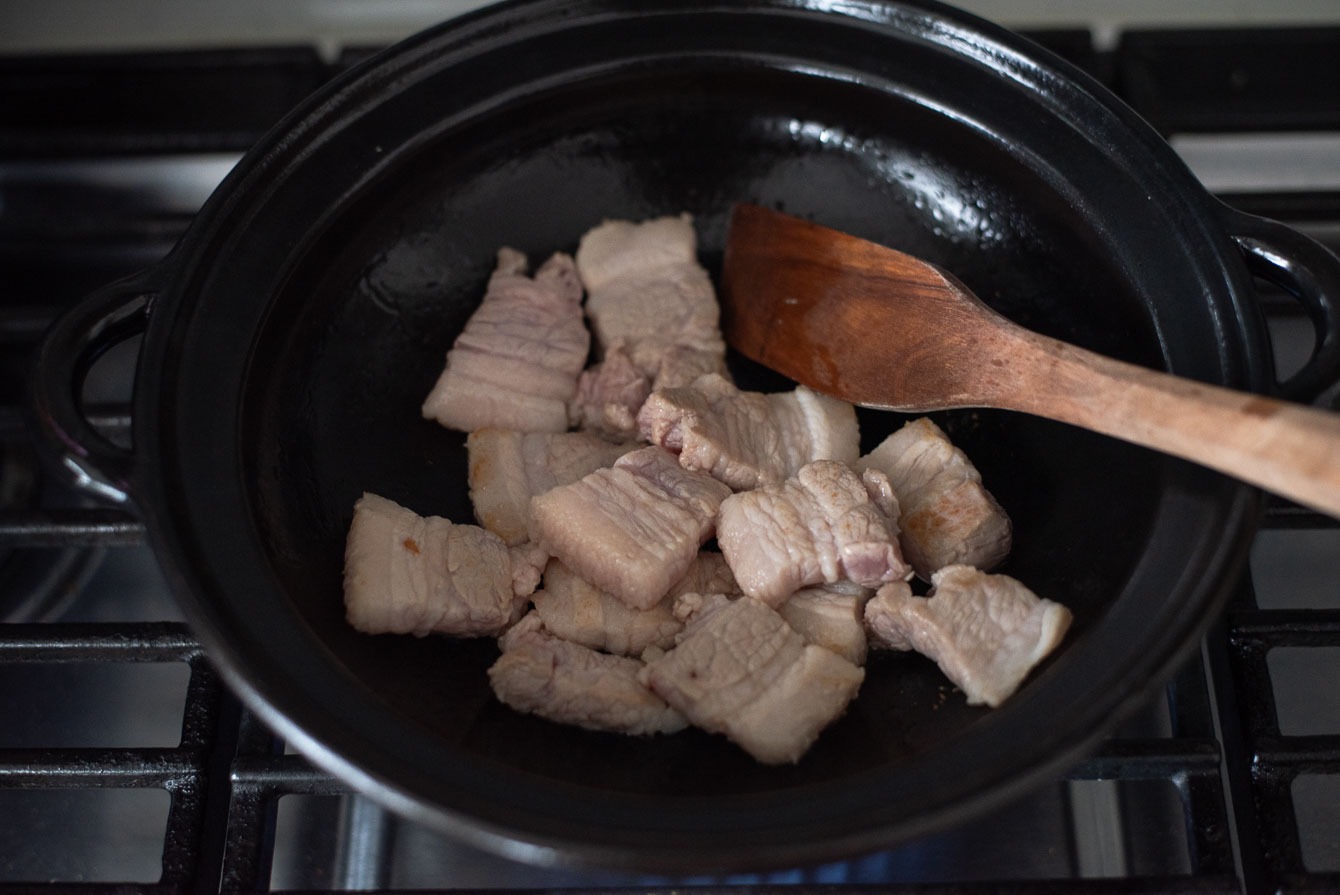
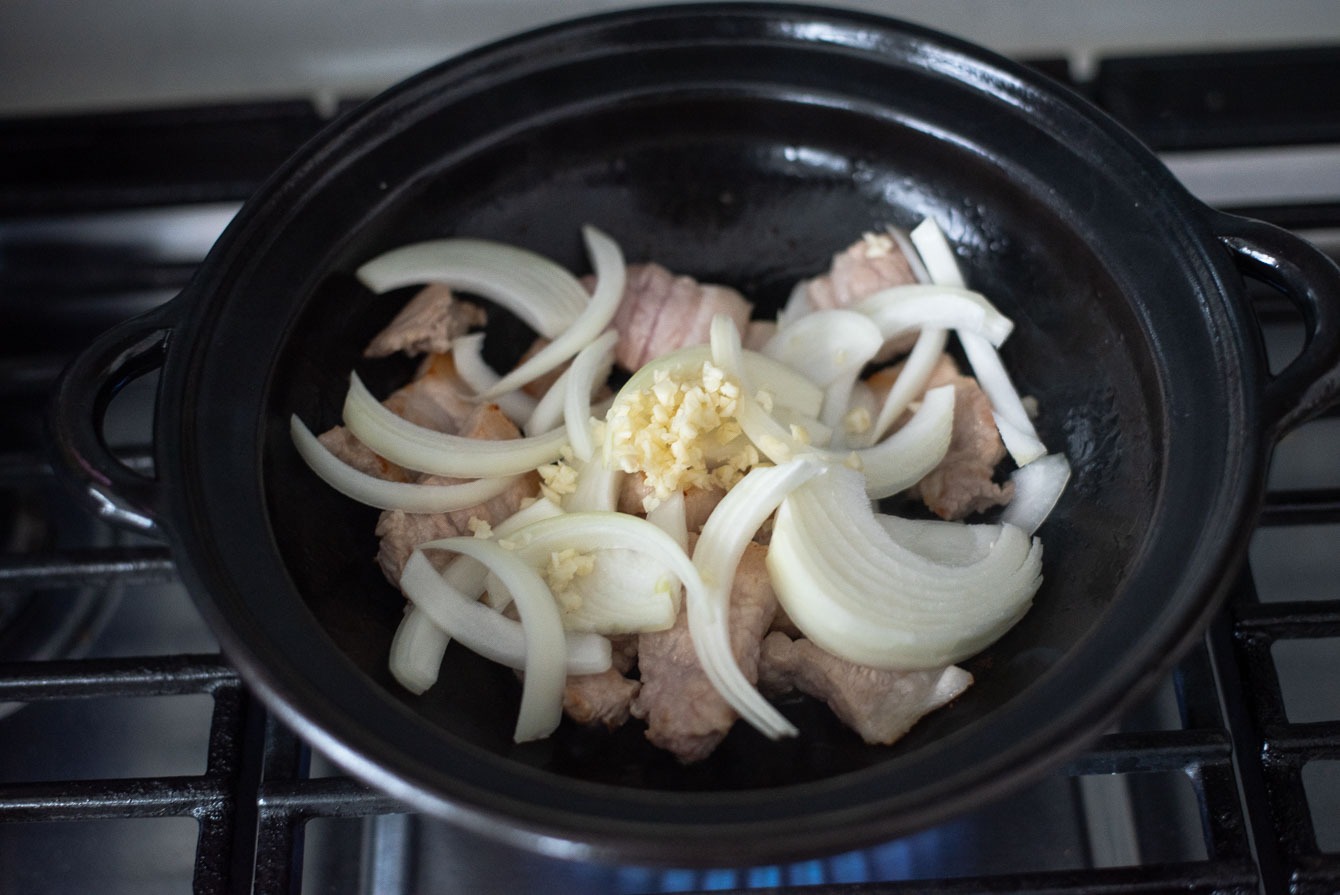
Step 1. Heat oil in a pot over medium high heat. Add pork belly slices and cook throughly. Add onion and garlic, and cook for 1 minute.
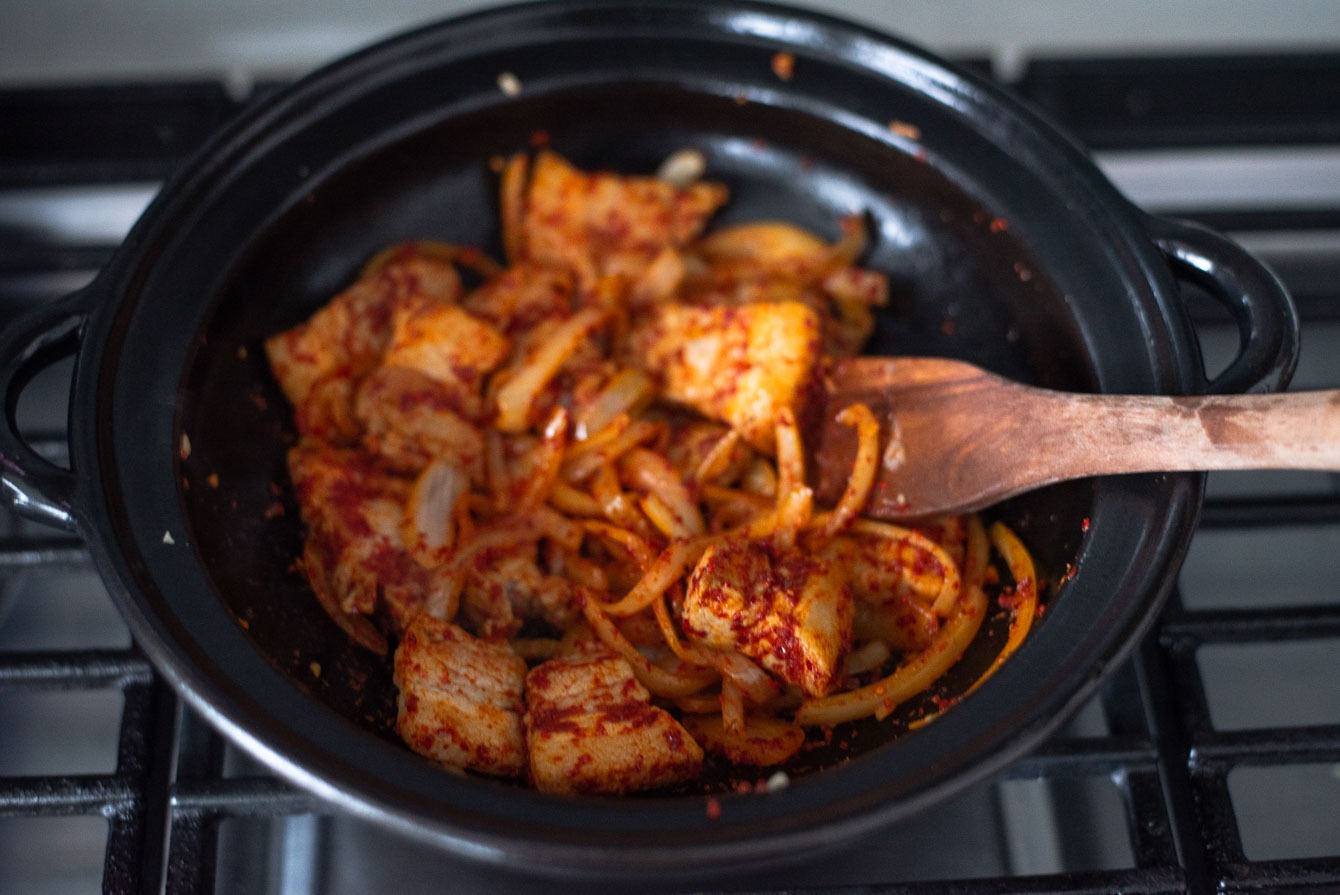
Step 2. Add Korean chili flakes and toss everything to coat.
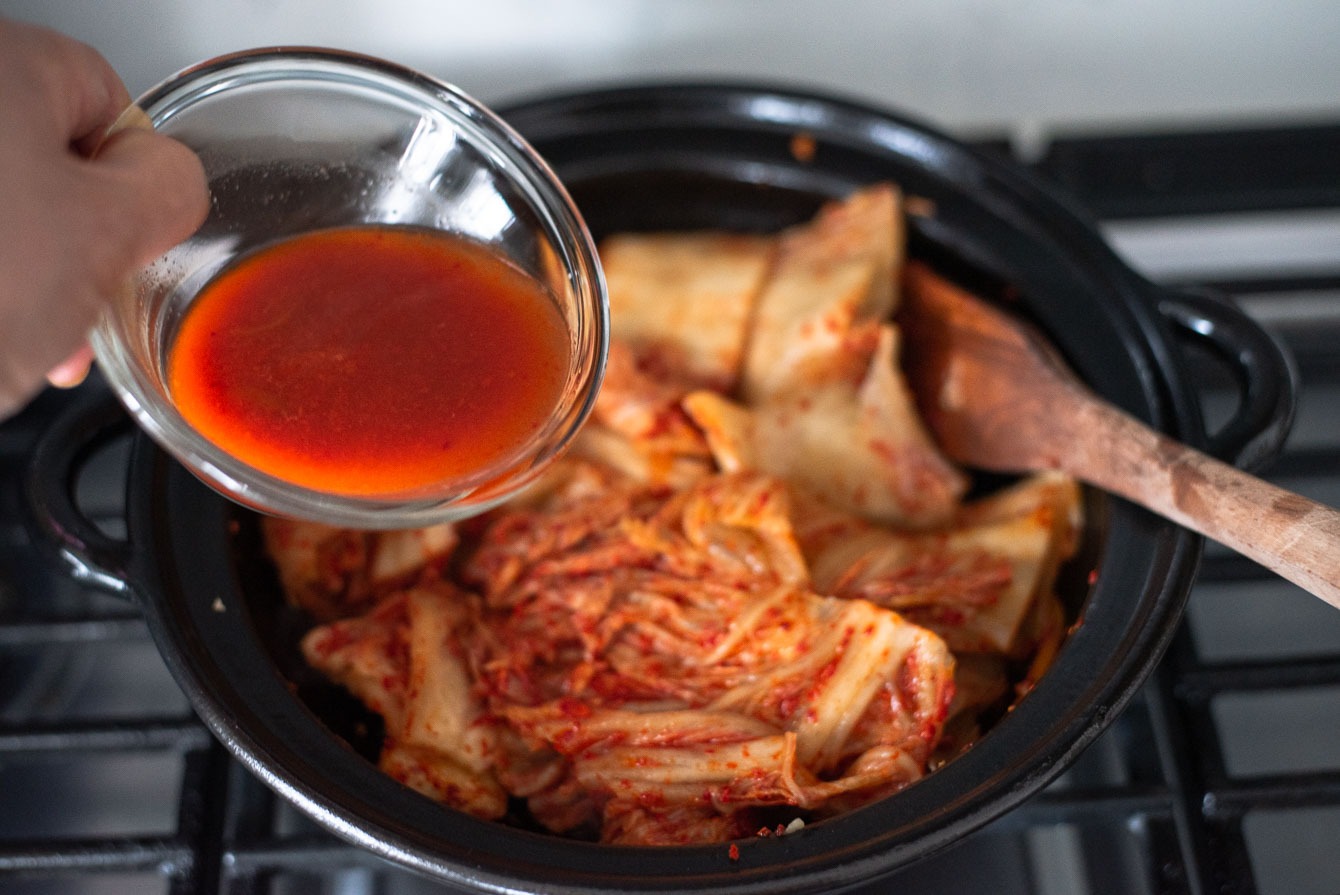
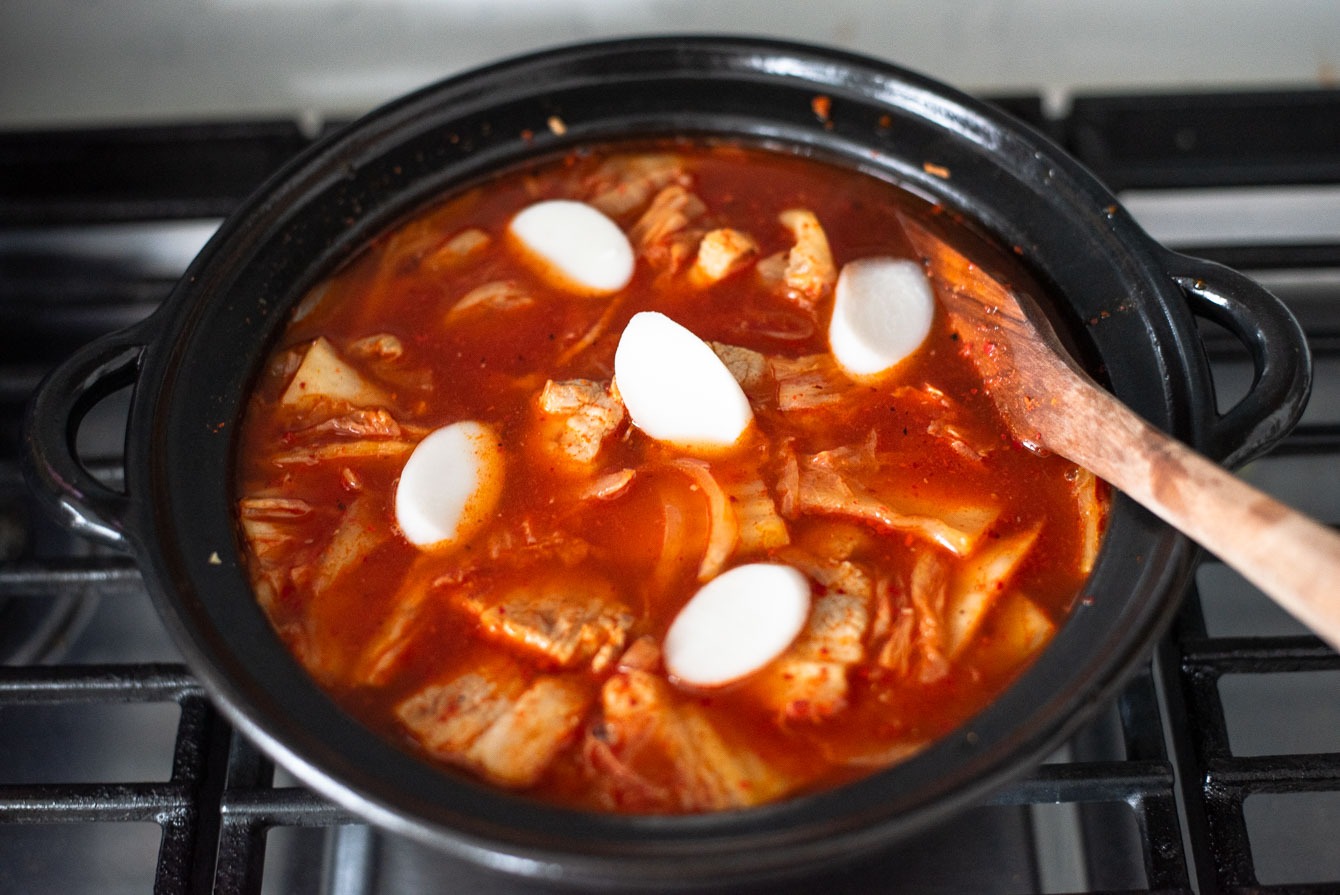
Step 3. Add sliced kimchi, kimchi juice, water, and rice cakes (if using). Cover with a lid and bring to boil. Reduce the heat to low and simmer for 15-20 minutes.
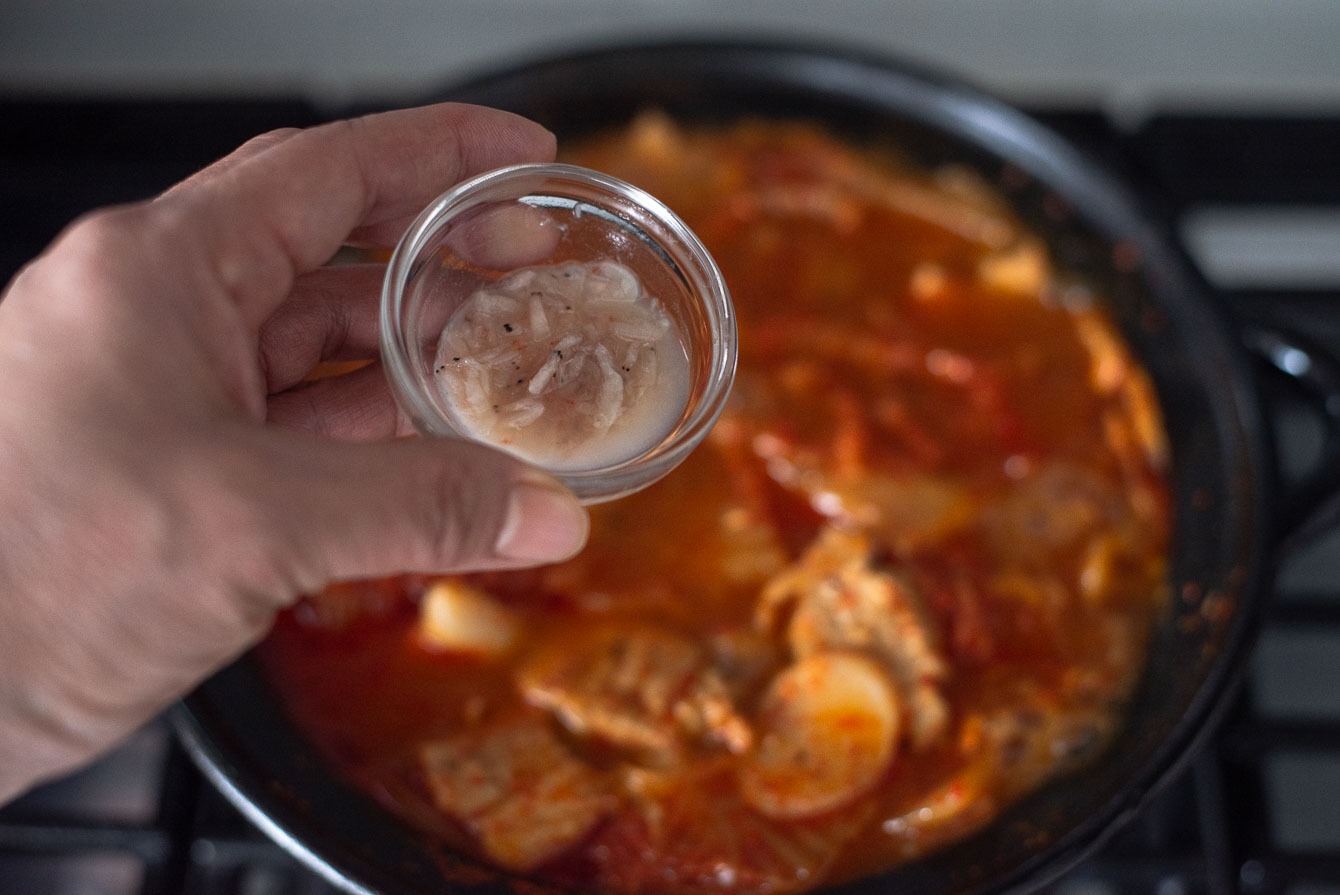
Step 4. Add salted shrimp snd Korean soup soy sauce and stir the stew. Taste the stew and season more with salt if needed.
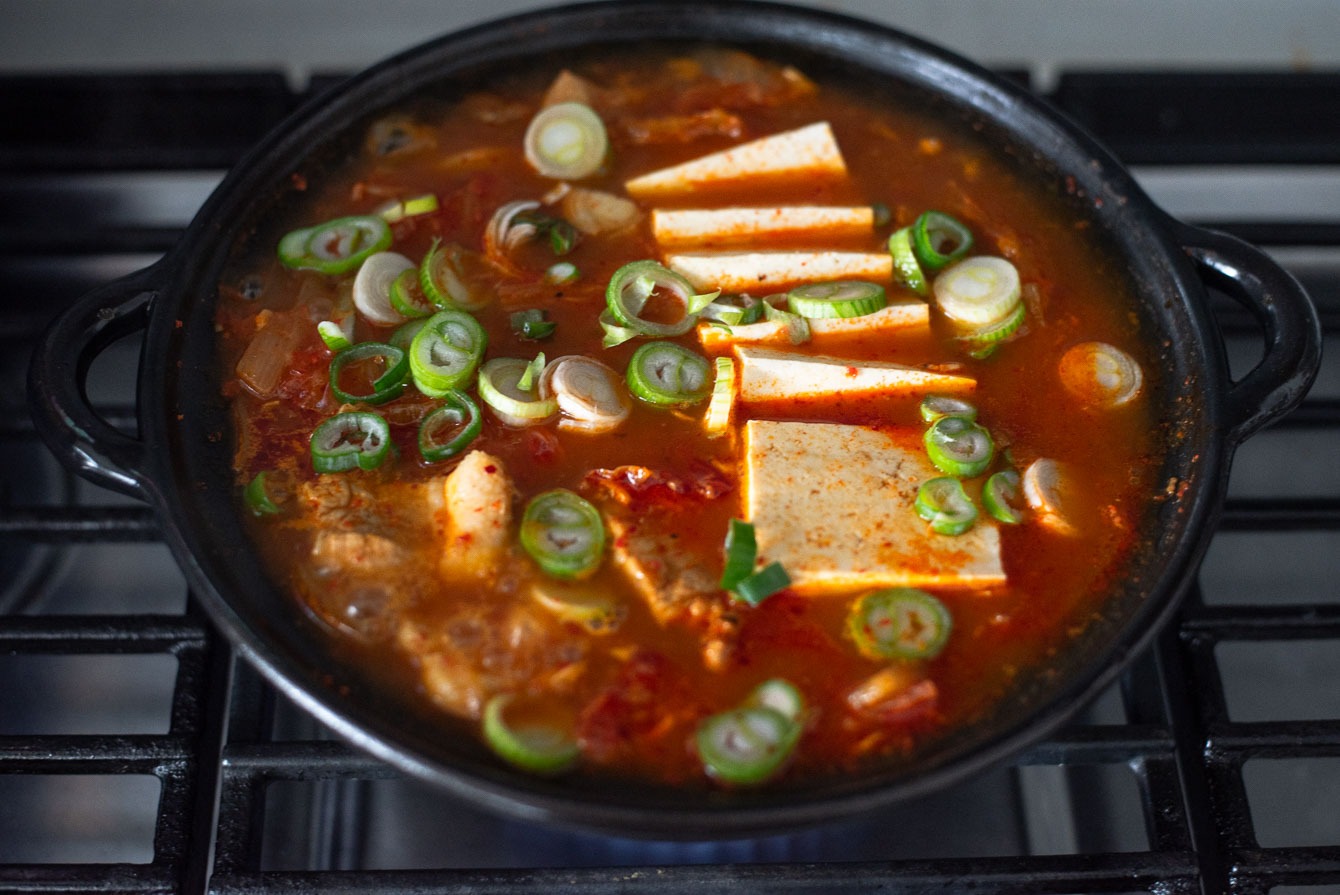
Step 5. Add tofu slices and simmer for another 5 minutes. As a final step just before serving, garnish with green onion.
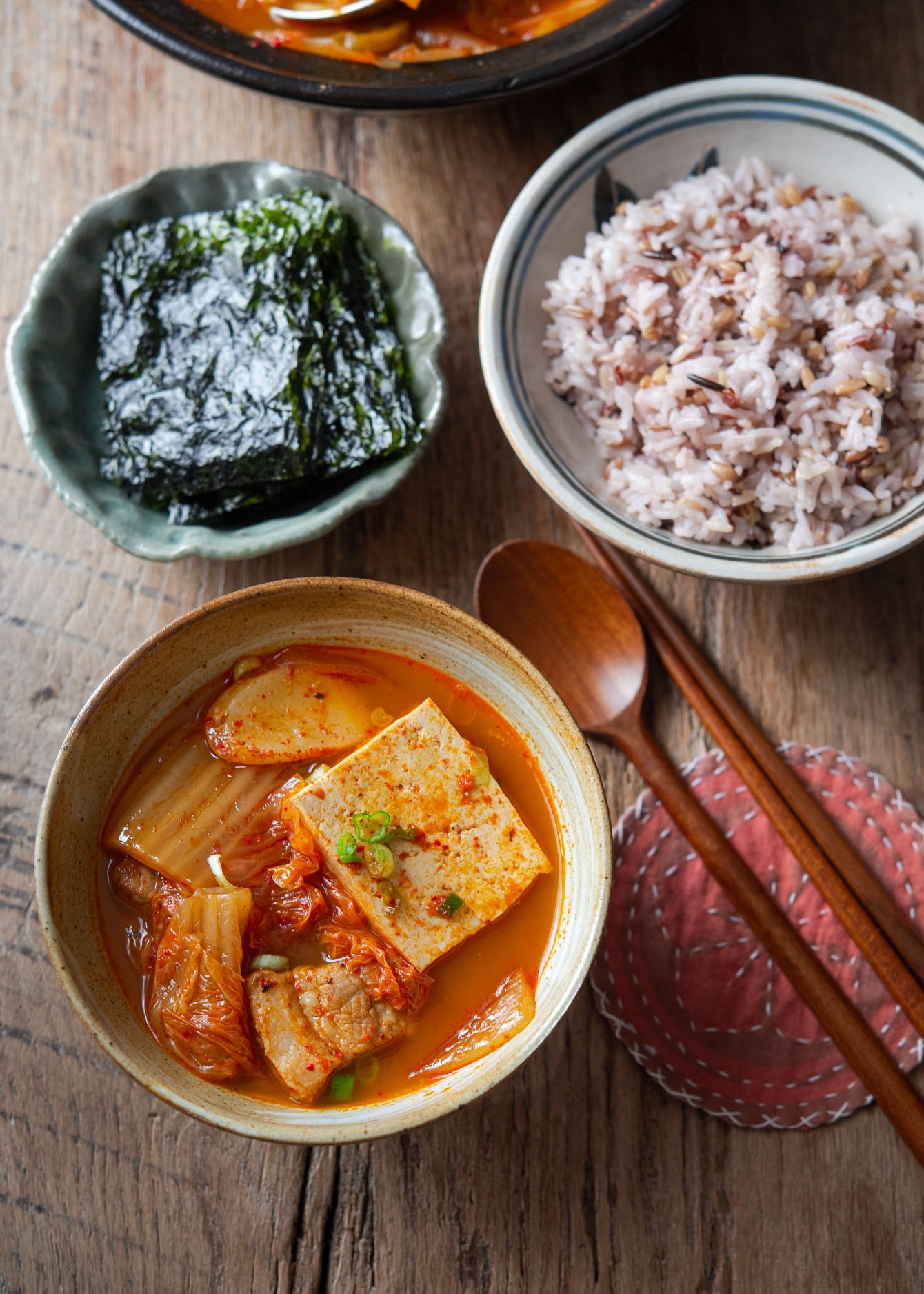
Perfect Pairings for Your Kimchi Stew
Serve your hot kimchi stew with rice and a few Korean side dishes. Try pairing it with:
- Spinach Side Dish (Sigeumchi Namul)
- Dried Anchovy Side Dish (Two Recipes)
- Roasted & Dried Seaweed Snack
- Bean Sprout Side Dish (Kongnaul Muchim)
- Pan-Fried Potatoes (Gamja Bokkeum)
Storage and Reheating Tips
The flavor of kimchi stew intensifies over time and can be stored in the refrigerator for up to two weeks. To reheat, simply warm it in a microwave or on a stovetop until heated through.
If you enjoy Korean stews, check out these popular recipes:
- Soondubu Jjigae Recipe (Korean Soft Tofu Soup)
- Doenjang Jjigae (Korean Soybean Paste Stew)
- Army Stew (Budae Jjigae)
- Spicy Pork Stew with Zucchini
- Korean Chicken Stew (Dakdoritang)
I hope you’ll try this Authentic pork kimchi stew (kimchi jjigae) to experience the vibrant flavors of Korean cuisine. This easy recipe is designed to suit both beginners and seasoned cooks, and it’s the perfect way to savor your fermented kimchi.
If you’ve tried it, please take a moment to leave a star rating & comment below. I love hearing from you, and it helps other readers, too.
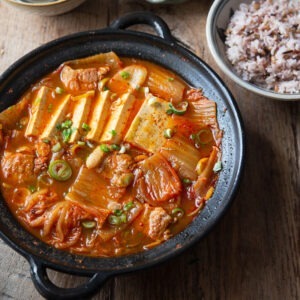
Authentic Pork Kimchi Stew Recipe (Kimchi Jjigae)
Recipe Video
Ingredients
- 1 tbsp oil
- 1/2 lb pork belly, sliced
- 1/2 medium onion, sliced
- 2 cloves garlic, finely minced
- 1 tbsp Korean chili flakes (gochugaru)
- 1 lb (450 g) sour kimchi, sliced
- 4 tbsp kimchi juice
- 2 1/2 cup (600 ml) water
- 5 piece rice cake rounds, optional
- 1 tsp Korean salted shrimp
- 1 tbsp Korean soup soy sauce (gukganjang), or Korean tuna sauce
- 1/2 lb (225 g) soft tofu, sliced
- 1 green onion, chopped
- pinches salt , to taste
Instructions
- Heat oil in a pot over medium high heat. Add pork belly slices and cook thoroughly. Add onion and garlic, and cook for 1 minute. Add Korean chili flakes and toss everything to coat.
- Add sliced kimchi, kimchi juice, water, and rice cakes (if using). Cover with a lid and bring to boil. Reduce the heat to low and simmer for 15-20 minutes. Add salted shrimp and Korean soup soy sauce and stir the stew. Taste the stew and season more with salt if needed.
- Add tofu slices and simmer for another 5 minutes. As a final step just before serving, garnish with green onion. Enjoy kimchi jjiage hot with rice and a few Korean side dishes.

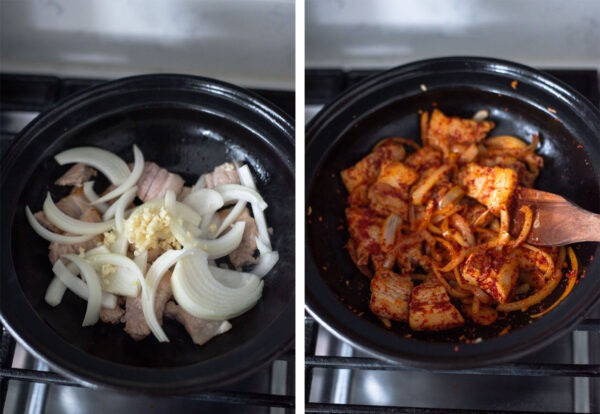
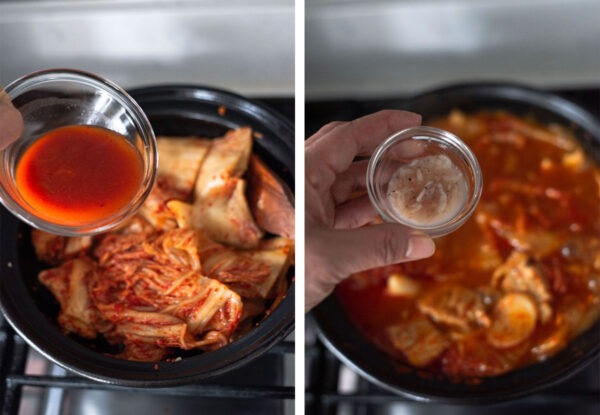
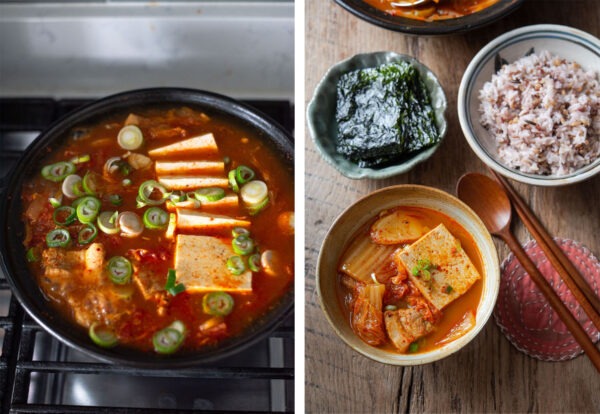

Hi Holly,
I can’t thank you enough for this recipe! My favorite dish is kimchee jigae and I could never replicate it at home despite trying several recipes. This is a winner and my family all agreed. It’s easy, simple to make, and delicious.
So happy to hear that, Kay! I hope you also get to try different varieties of kimchi jjigae recipe on my site. Thank you very much.
wow i just came across this and i cant believe the comments are from a long time ago…hope yall r doin well
I found your site while looking for kimchi recipe and i have to say i cant stop reading your post lol Very authentic Korean cooking that i want to try out one by one! Those ingredient is v easy to find in Singapore, i saw them at Korean stores but never tried, your step by step guide with amazing photos is great help. Thanks for sharing and wish you a smooth move home.
Thank you I am really interested in making this stew… but I must wait for my kimchi to ferment… I was wondering if there is a specific amount of reserved kimchi juice that you need. 1 cup? 1 1/2 cups? Please let me know, thank you!
Hi Joanna
The recipe says 1/2cup of kimchi juice. Hope you like the stew!
thank i am very much interested to try make this stew kimchi i love to eat thank you very much ,,,HOLLY
Hi Holly
Can you please let know how long can kimchee be kept in the fridge?
Thank you.
Depends on the types of Kimchi, it can be kept from 1 month to 1 year. Usually cabbage kimchi last longer than radish kimchi or cucumber kimchi. If the cabbage kimchi is in whole (wrapped in its own leaf, not diced) made with Korean cabbage, they can last up to 1 year if stored properly in the fridge. Some cabbage kimchi can last longer but those are for stews and braising dishes. I have tried 3 year old kimchi. Very sour, can’t eat the way it is, but made wonderful stews.
that looks like a beautiful stew! i made korean gamjatang before, and would love to try more korean stews! yay and i have kimchee now, althought not as good as yours.
I`m falling in love with your blue pot. With kimchi stew in it 😀 With this kind of weather, kimchi stew is the best!
LOVE your Staub! I have one in Grenadine. It really is true love.
While i'm not a huge fan of kimchee, your pictures are beautiful and I -really- like your blue pot, what is the brand of it?
What a funny story! hehe I love kimchi jjigae 😀 and love your step by step photos as always